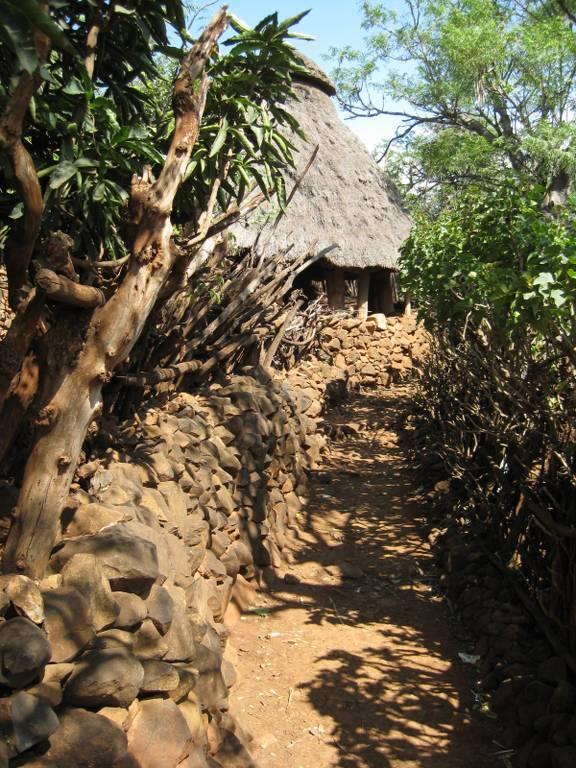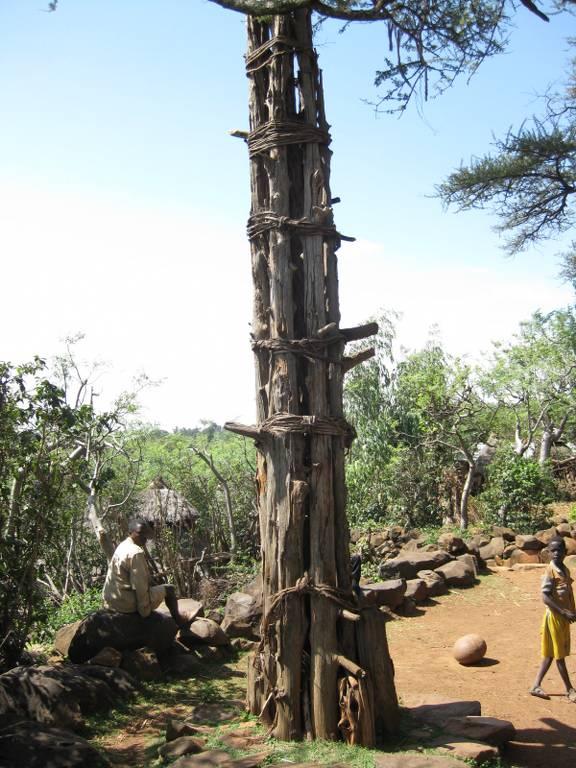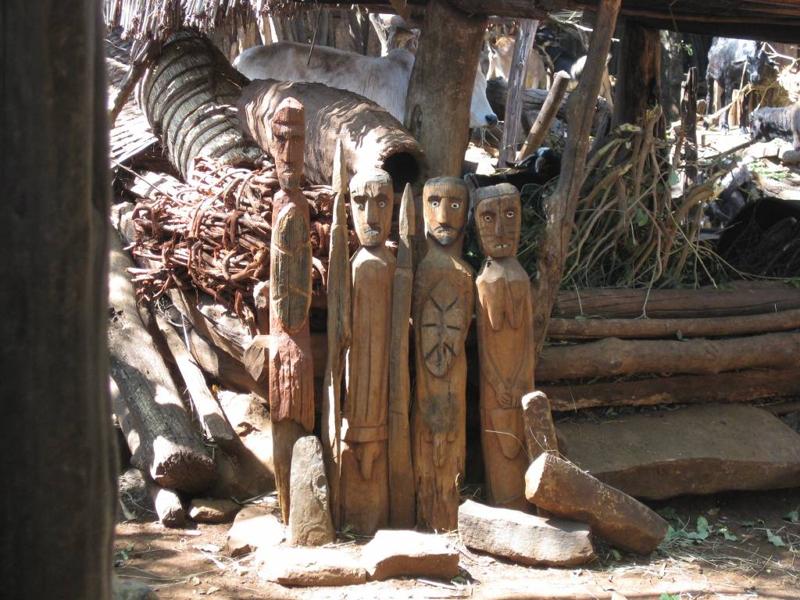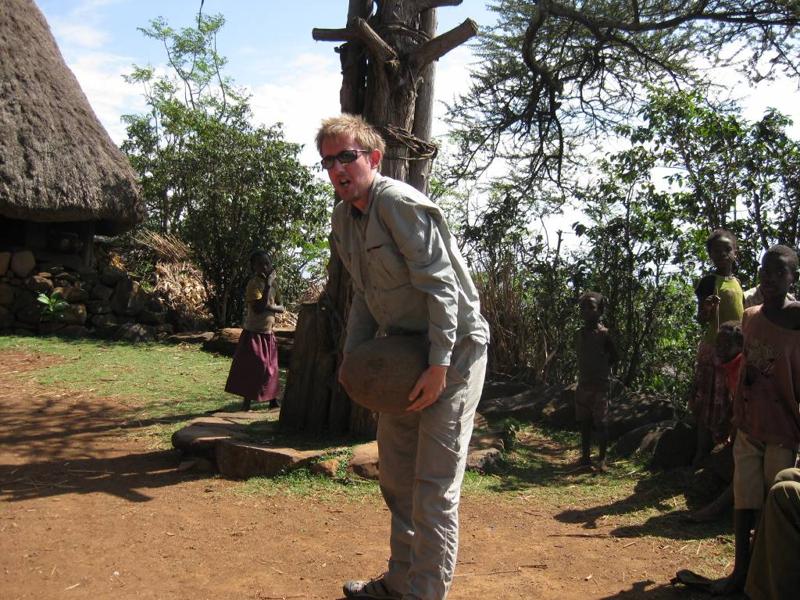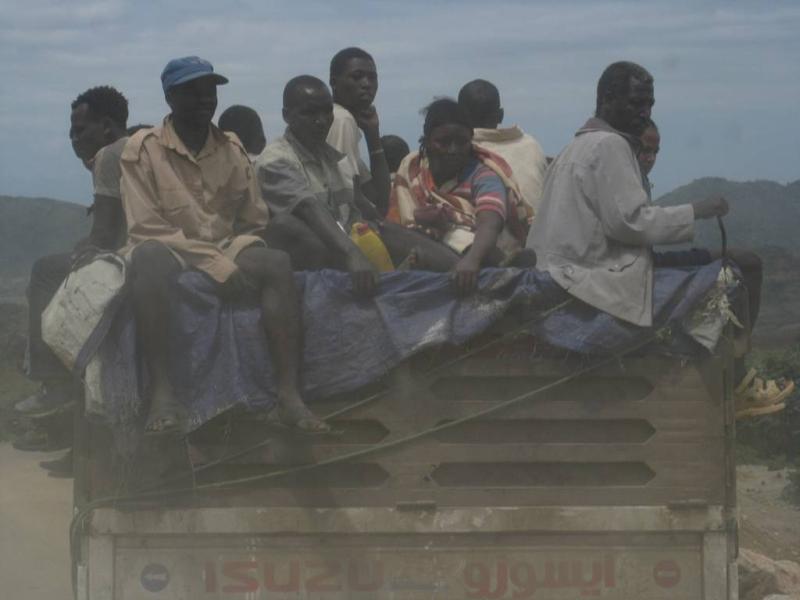In the morning we visited a Konso village. The Konso live at the tops of the local hills and their villages are well fortified to protect them from attacks from the lowland tribes.
The Konso use terracing to allow them to farm on the steep slopes. Unlike the wide terraces used in other countries, each terrace step was only wide enough for a single row of crops. I asked a tribesman why they didn't make the terraces wider and so waste less space with terrace boundaries. They replied that more terraces meant more crops because you could grow crops on more terraces - which didn't seem like a very satisfactory answer.
The Konso traditionally plant all their crops mixed together in one field rather than having separate fields for each crop. The crops are chosen such that they thrive in different weather conditions. That way, they get a full field of crops irrespective of how the weather turns out - a smart idea.
The central square of the village contains a rock known as the "maturity stone". A man is only considered mature enough to marry when he is strong enough to lift the stone above his head. I made a couple of attempts, but apparently I am still too immature to marry.
Historically the Konso would fight with the neighbouring lowland tribes, but things have apparently been peaceful for a while now. Scattered around the village were several wooden sculptures called wakkas. Each wakka honours a hero who has killed members of another tribe. The wakka shows the hero in the middle with his wives around him and the people he killed in the outside. The biggest wakka I saw was for a hero who seemed to have killed ten people.
Konso are divided into a series of 18 year generations. Every 18 years power is handed over to the next generation and a "generation pole" is raised to mark the occasion.
Incidentally, the uncomfortable buses that I complained about earlier are considered a luxury here. In the Omo most people travel in the back of, or hanging off the side of, overfilled supply trucks. It is apparently quite common for passengers to die and the government banned foreigners from riding the trucks after tourist deaths risked making the country look bad.
